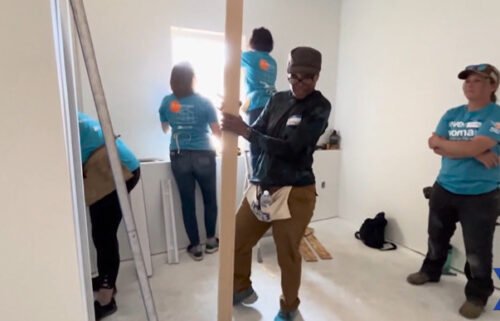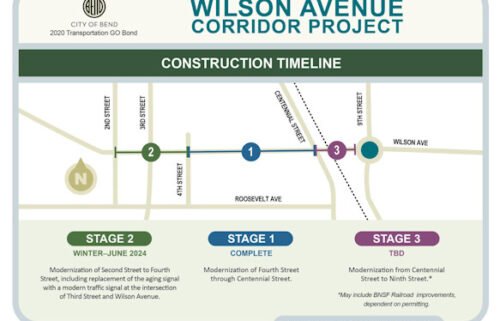As builders and developers prepare for Bend’s SDC fee hikes, we take a look at the reasons and the expected impacts
Also gave first, unanimous thumbs-up to pay raises for future councilors, mayor
BEND, Ore. (KTVZ) – Decades ago, when a much smaller city of Bend first implemented system development charges, known as SDCs, the goal seemed simple: Growth, with all its pros and cons, should “pay its own way,” not on the backs and wallets of existing residents.
Of course, there was criticism - even predictions of doom. One businessman warned the council these new fees were going to "kill the goose that laid the golden egg."
And yet, the city's growth soared for years, among the fastest in the nation.
It wasn’t that simple then, and it’s way more complicated now (what isn’t?)
Two weeks ago, after two years of work, public input and revisions, the latest update to those water, sewer and transportation SDCs were approved by councilors, in a series of five motions and 5-0 votes.
But not, of course, without a last round of public input that included some concerns that go way beyond things a city council necessarily has much control over.
The first year of the new SDCs -- phased in, in some cases -- takes effect July 1.
A spotlight of the changes on the residential side is a move to tiered SDCs on residential units, so that smaller-sized homes pay lower fees than larger ones. It's a bit - make that a lot - more complicated on the commercial side.
Chief Operating Officer Russ Grayson pointed out that Wednesday night’s hearing continued one paused in January amid plenty of concerns voiced about the impacts, primarily on the business sector, and especially on the need for more health care facilities.
Grayson broke down the need for us: "When you think about the need to improve intersections because more trips are coming out of that intersection because of growth, or expand roads or improve bike and pedestrian networks to make sure that they work correctly and have additional capacity for all this growth on the utilities side.
"Think about the main (sewer and water) trunk lines that we need to get around town to help support the growth expansions to our treatment plants, like our wastewater treatment facility, our water treatment plant. Any more, you need more storage reservoirs, those type of things. This helps provide some of that capital for those large-scale improvements," Grayson said.
Among the many adjustments in back-and-forth discussions with the business sector: a “medical overlay” the reduced the fees for those near the hospital. And to ease the initial pain, the city is doing a two- or three-year phase-in of transportation SDCs for those who’ll see the biggest hikes, of at least 20%,
The first speaker, architect Kathy Austin, was part of the stakeholder group that helped craft the changes, representing the Affordable Housing Advisory Committee, and said she “was one of the loudest voices in the room.” So she said she was “extremely pleased” at the residential breakdown based on a home’s size.
“The general public probably didn’t know,” she said, that the SDC has been the same for a 1,200-square-foot home as one of 4,000 square feet, while now the fee for the smaller home will be about half as much, which she called “much more equitable.”
But an online caller, the owner of an ophthalmology group, expressed "great concern about long-term impacts" on the medical community, which she said cannot pass along higher fees in its reimbursement rates and of course faces increased costs, like just about everyone. And she said that might keep needed projects from happening and thus make it “harder and harder to find good access to care,” making for more long trips over the mountains to get the care they need.
“The medical community cannot pass these fees on,” she said. “These SDCs will have a significant impact."
She also called the 2- or 3-year phase in a "non-solution" to the problems.
"In two or three years, our Medicare reimbursement rates will be down another 5 and 10%, and the cost of living and the cost of staffing will have increased again," she said. "Please treat the medical community differently as you apply these fees. Thank you."
Morgan Greenwood, vice president of government affairs for the Central Oregon Builders Association, questioned the eligibility of bike-pedestrian projects for inclusion on the SDC-funded project list, saying while they are needed to fill gaps and make them safer, they are a “remedy to an existing deficiency. That’s not a deficiency caused by growth.”
Greenwood urged use of other funding sources for those projects, but said it’s “not to imply a value judgment” for the alternate-mode projects, or to “question the necessity for additional bike-ped capacity.”
Developer Kevin Spencer, a Bend resident for 35 years, said the fees should be based not on square footage, but the project’s actual impact on city infrastructure, calling that more fair.
When it came time for councilors to deliberate, Megan Perkins suggested a one-year “pause” before starting a 3-year phase in of higher SDCs for medical and dental projects, which the council later agreed to.
But when it comes to issues facing the health care sector, it “goes beyond what a city can provide,” she said, and suggested further discussion and adding those medical community issues to the city’s state and federal lobbying agenda, to “take care of those who take care of us.”
Mayor Melanie Kebler said, “Those are great ideas. These are systemic, big issues.”
Councilor Ariel Mendez said while much of how SDCs work are dictated by state law, he’s long been skeptical of the “car-dependent” trip models used for the calculations and is “committed to look for alternatives.”
Long-time Councilor Barb Campbell said the first “urban area” designation under new state climate-friendly mandates could make things worse, if more aren’t created.
“Everything I’ve heard from staff is that this is not done,” she said, with more updates and details to follow. Why she knows that doubling, even tripling of some fees is “terrifying and overwhelming,” she also related that most people she talks with are “asking why we don’t charge more for growth.”
Kebler said more can and should be done, but the city is “responsible for infrastructure,” and “this is the tool they give us.”
Campbell added, “If we believe we need more health care providers, that is not a problem we can solve with SDCs. ,,, We can’t base an SDC category on something we feel we need more of,” as they are based on the costs in very specific project lists.
Councilors also voted unanimously to hold the first reading and accept a citizen committee’s recommendations for higher pay -- $30,000 a year for councilors, $50,000 for the mayor – after the next round of elections. A second reading and final vote happens in two weeks. Councilors began the discussion when they received a presentation from the committee at a meeting last month.
Mendez said “if we want a more representative council” with a more diverse background, the higher pay could make the difference in more people being able to run. Councilor Megan Norris pointed to the high cost of health care, as an example, and others have mentioned the same about child care.
Councilor Mike Riley said he wanted a pay scale still tied to the area’s median income, but that he respected “the time, thought and database approach the committee used” to develop the proposal. He also cited the “key goal” of “supporting a wider diversity of community members to serve, especially working parents.
Kebler said she’d served with councilors who resigned early from their terms, in part due to the financial challenges of putting in time for the needed hours to do the job well.






